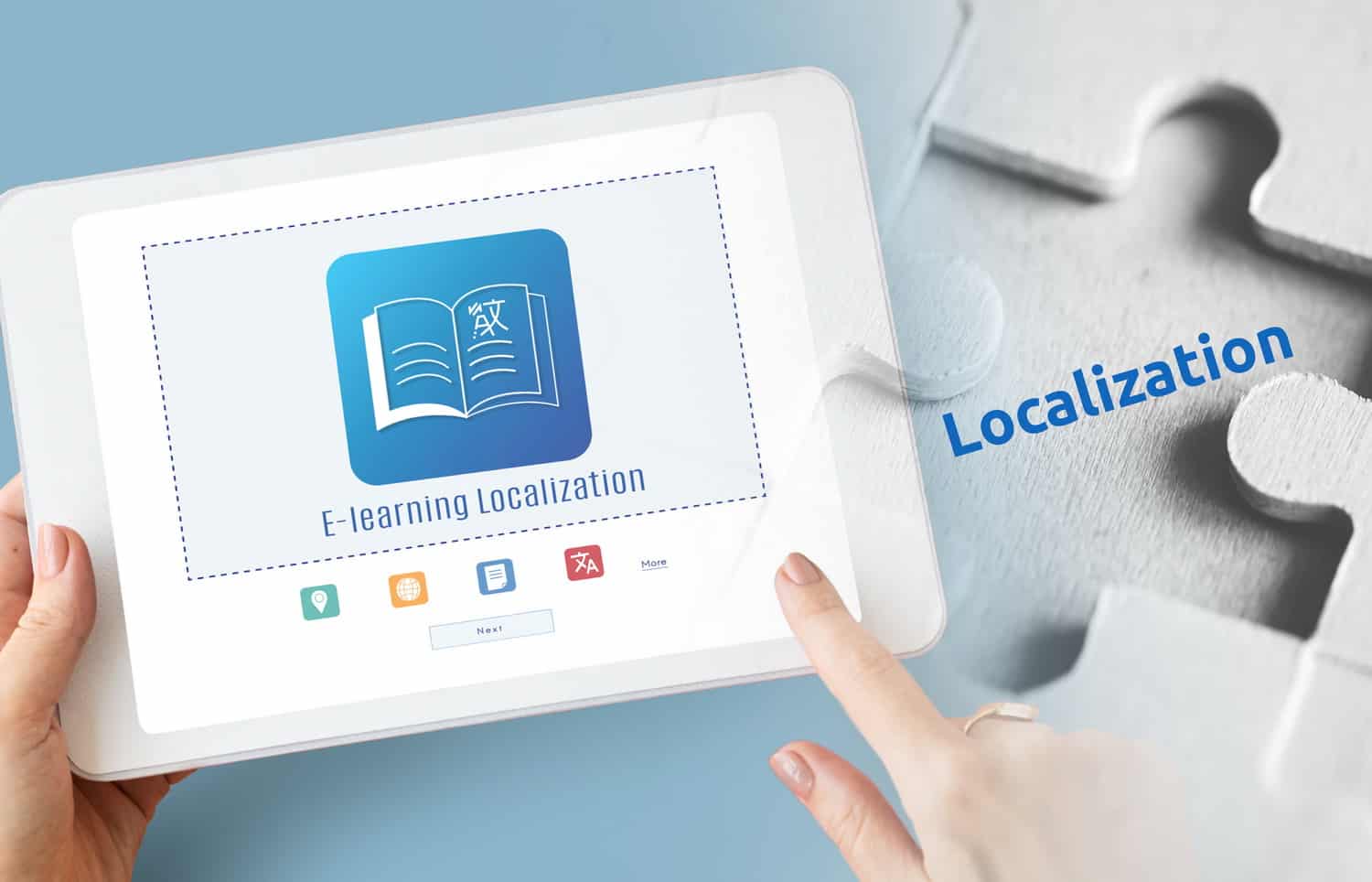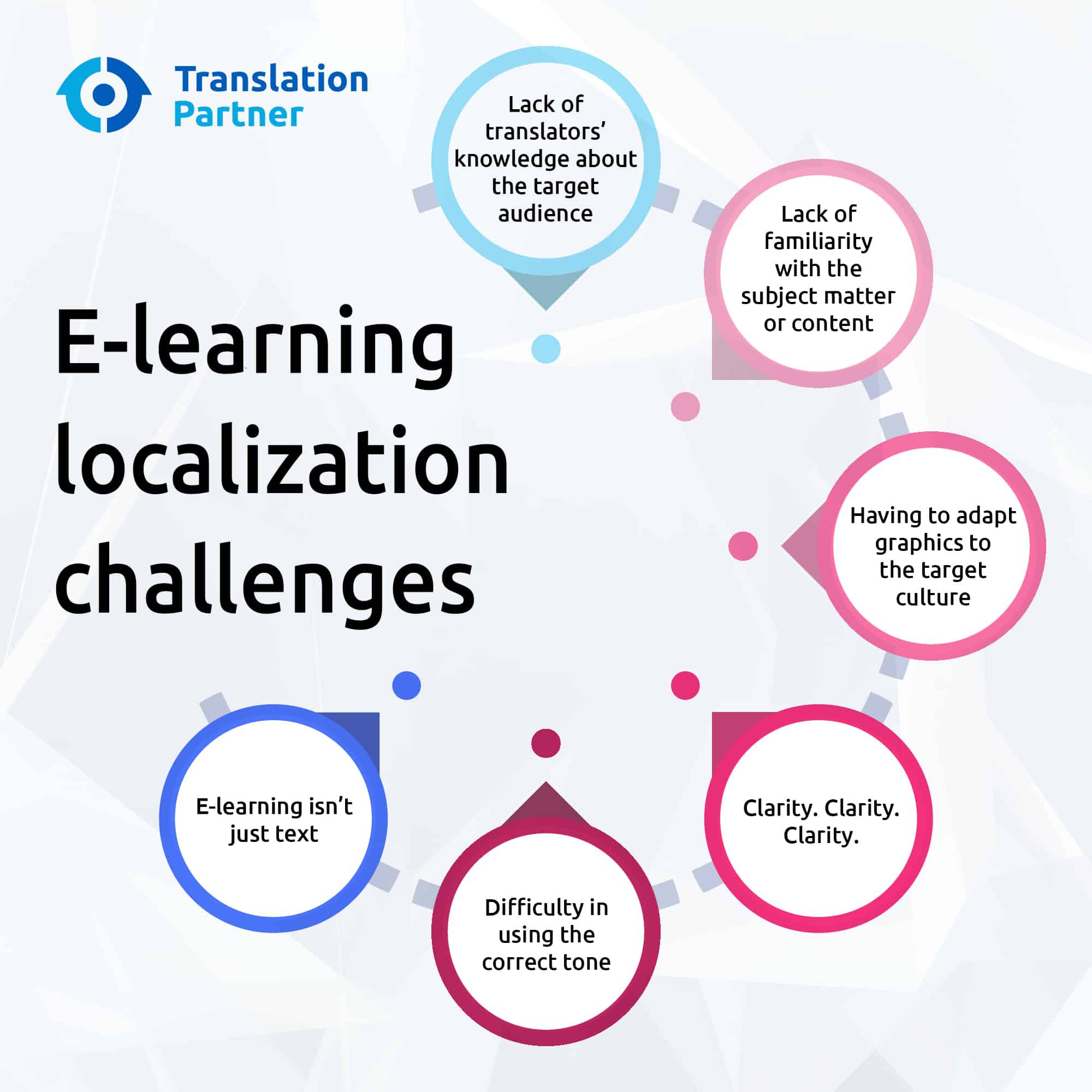The 6 E-learning Localization Challenges Businesses Need to Know

The world of online education, or e-learning, is growing bigger every day. But with every new trend, there are pros and cons. Online learning helps students, adults, and companies. But what happens when these e-learning materials need to be transformed into another language? That’s when e-learning localization challenges arise.
The global e-learning market is forecast to be worth a whopping $325 billion by 2024, according to data by market research firm Global Industry Analysts. The 2024 figure is triple what the e-learning market was worth in 2015. That was $107 billion.
Moreover, the global online course market was valued at $3.61 billion in 2018. This figure is expected to surge to $25.33 billion between 2019 and 2025, marking a compound annual growth rate (CAGR) of over 32%. (Zion Market Research)
Companies have seen both savings and employee development on the back of e-learning. One such company was IBM, which saved nearly $200 million after making the switch to online learning. (SH!FT)
But while all this data indicates massive growth in the industry, things get a little more complicated when e-learning materials need to be taught and adapted to other countries.
The process of translating online learning content is significantly different from other forms of translation.
In this article, we’re going to focus on the complex side of online learning, specifically the challenges of e-learning translation and localization.
What is e-learning localization?
In today’s always-accessible world, a need arises in the education space. That’s translating e-learning content from one language to another.
But the problem isn’t the need to translate. It’s the ‘how to’ behind the translation process.
When it comes to e-learning, the important question to ask is: Do we translate this content or localize it?
And many online education service providers aren’t familiar with the two sides of translation.
So let’s set the record straight about the difference between translation and localization. Then, we’ll dive into the top e-learning localization challenges that are affecting the industry.
Translation: It’s the process of transforming a document or piece of content from one language to another.
Localization: It’s an advanced form of translation that adapts the translated content to a specific country, region, language, or culture.
For example, Germany, Austria, and parts of Switzerland speak German. However, if someone were to translate an online course into German, they may have to consider where the course will be given and localize it rather than translate it.
While you can translate the online course, there will be a few nuances missing because it’s not localized to a certain locale.
This means that e-learning localization is a step deeper into e-learning translation.
E-learning localization challenges
Now that we have the basics covered, let’s look at the top e-learning localization challenges that plague the industry.
These problems can affect the translated materials or worse the business or individual presenting them.
We’ve compiled a list of the top challenges that impact this type of localization:

1. Lack of translators’ knowledge about the target audience
Translators are generally good researchers. But they aren’t marketers. And they don’t take the target audience into account. It’s not a regular aspect in the world of translation.
Unfortunately, when it comes to localizing online educational content, knowing who your target audience is and how they act and react, and live is important. It’s because of this that localization is a better option for e-learning materials.
2. Lack of familiarity with the subject matter or content
But lack of knowledge about audiences isn’t the only problem.
The absence of knowledge and expertise about how e-learning materials are translated and the different content niches pose another challenge.
One of the benefits of online learning is that it has opened the door for many people and companies to explore areas that weren’t accessible to them.
A downside from a translation and localization perspective, however, is that it has made the translation process a lot more complicated.
This lack is even more prevalent among freelance translators. Not because of their translation skills but rather because of the absence of references for such materials.
For example, translating an online web development course into Arabic would render the translation quite difficult. That’s because there aren’t many – if any – web developers turned-translators.
3. Having to adapt graphics to the target culture
When it comes to translating educational content, a few things need to be considered. Chief among those is the graphics or images used in the content.
To help learners get the most of their e-learning experience, translators and translation agencies need to adapt the educational content to the target audience and market, their culture, and their language.
Having an e-learning translation process will come in handy for freelancers, translation service providers, and e-learning translation companies.
4. Clarity. Clarity. Clarity.
Part of adapting to culture and locale involves the use of idioms and phrases that may fit one culture but not the other.
In this case, the e-learning localization process becomes more of a transcreation process.
The translator needs to be aware of idioms in the source language, potential equivalents in the target language, go-arounds, and more importantly ensuring that the material is free of ambiguity and misinterpretation.
5. Difficulty in using the correct tone
Another major e-learning translation and localization challenges are that of conveying the tone of the e-learning material.
In English, it’s easy to write using a conversational style. The same cannot be said for other languages.
Take Arabic for example. There are 22 Arab nations, each with its dialect and, in a way, culture. Moreover, there’s the colloquial language used by each country and sometimes cities within the same country.
Not to mention the presence of formal or standard Arabic and high standard Arabic which is used in very formal documents such as contracts.
All of these are aspects of the Arabic language that need to be taken into account before translating e-learning material.
6. E-learning isn’t just text
Unlike face-to-face education, e-learning comprises several elements such as graphics, presentation, videos, and audio (often as a voice-over).
This makes e-learning translation a lot more difficult than standard educational translation.
A company that’s looking to translate and localize its online educational materials should be aware of these elements.
If a company were to work with freelancers, it should be aware that it will outsource various types of content to various people. If it’s working with a translation agency like TranslationPartner, the company should include all its needs in its translation brief.
Final words
The e-learning market is forecast to grow at a rapid pace. This, in turn, requires translation and localization service providers to keep up and overcome current and future e-learning localization challenges.
Whether you choose to conduct your e-learning translation in-house, hire freelancers, or work with a translation agency, having a process can go a long way toward helping you achieve the best results and provide the best e-learning experience to your customers and learners.
Last but not least, working with an agency as TranslationPartner comes with its perks.
Agencies take on the full workload and become the ones responsible for outsourcing videos and audio and delivering the final result to you, the client.
If you’d like to learn more about online learning translation and localization, then request your free quote today.
